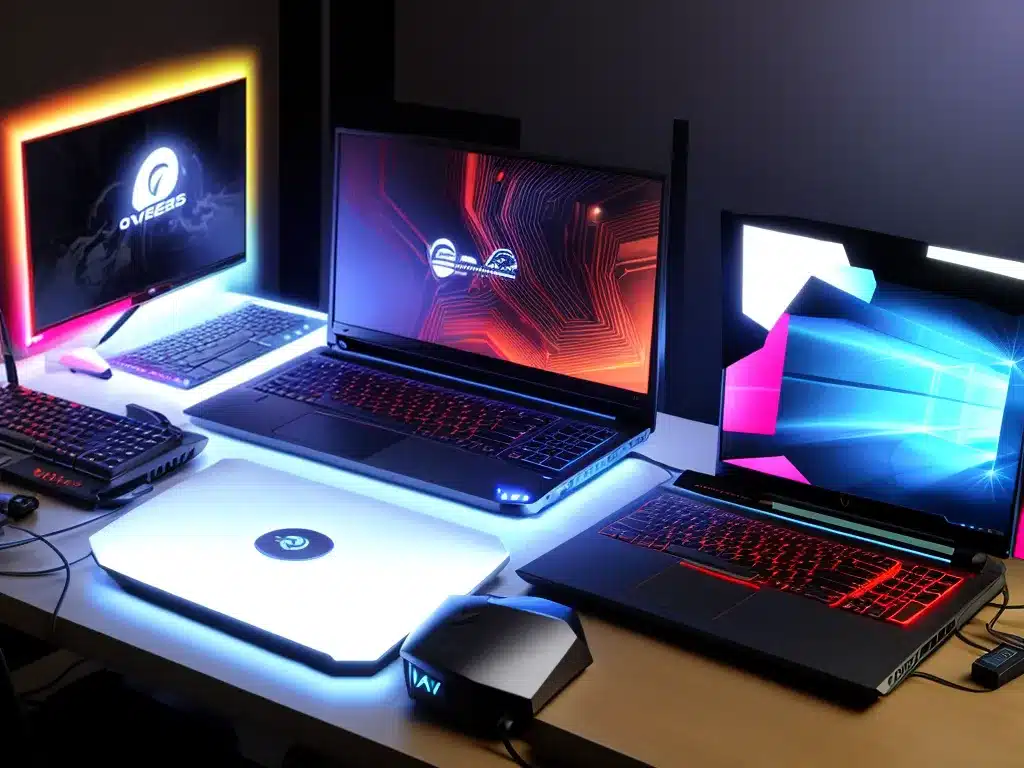
Overheating is a common problem faced by many gaming PC and laptop users. High temperatures can lead to thermal throttling, system crashes, and component damage. In this comprehensive guide, I will discuss the various causes of overheating in gaming systems and provide solutions to fix them.
Why Do Gaming Computers Overheat?
There are several key reasons why gaming PCs and laptops tend to run hotter than regular systems:
Powerful Components
High-end CPUs and GPUs used in gaming systems generate a lot of heat when running games and other demanding applications. Components like the CPU, GPU, RAM all output heat that needs to be dissipated.
Inferior Cooling Systems
Many pre-built gaming PCs and laptops compromise on cooling to cut costs. Insufficient fans, small heatsinks, and poor airflow lead to inadequate cooling.
Dust Buildup
Dust accumulation on components like fans, heatsinks, and vents blocks airflow and reduces cooling efficiency over time.
Poor Cable Management
Messy cable routing blocks airflow and prevents hot air from escaping the chassis properly.
Insufficient Power
Underpowered PSUs lead to components running hotter than their recommended temps.
High Ambient Temperatures
Gaming in hot environments, especially without air conditioning, can raise temperatures drastically.
Diagnosing Overheating Issues
To pinpoint the exact cause of overheating, we need to monitor component temperatures under load. Here are some ways to diagnose overheating:
-
Use hardware monitoring software like SpeedFan or HWinfo to check temps for the CPU, GPU, motherboard.
-
Run intensive games and apps like benchmarks to simulate peak loads.
-
Check if CPUs or GPUs are thermally throttling by monitoring clock speeds.
-
Thermal cameras can visualize hot spots on components and chassis.
-
Feel hot exhaust air from vents to locate sources of heat.
Ideally, gaming components should run below 85°C under load. If temps exceed 90-95°C, take steps to improve cooling. Prolonged overheating degrades hardware lifespan.
Solutions to Reduce Temperatures
Here are proven methods to lower temperatures in hot gaming PCs:
1. Improve Airflow
-
Add more case fans to increase airflow. Aim for positive air pressure.
-
Remove solid front panels and drive cages blocking intake fans.
-
Route cables neatly to open airflow pathways inside the case.
-
Use an open-air test bench to eliminate case confinement.
-
Place the tower on the desk instead of the floor for better airflow.
2. Upgrade Cooling System
-
Install a beefier CPU cooler like a Noctua NH-D15 to handle heat output.
-
Replace the thermal paste between CPU and cooler for optimum heat transfer.
-
Add case fans with high CFM and static pressure. Prioritize intakes.
-
Water cooling radiators dissipate more heat but require maintenance.
3. Control Dust Buildup
-
Clean dust filters, fans, heatsinks regularly with compressed air.
-
Ensure case has washable dust filters over intakes.
-
Keep the PC area clean. Vacuum carpets, mop floors periodically.
-
Apply removable dust filters on intakes to catch particles.
4. Improve Case Airflow
-
Open up the case by removing non-essential panels and drive cages.
-
Opt for a case with mesh front panel, PSU shroud, and cable grommets.
-
Add case fans to unused mounts and slots to move air.
-
Adjust fan curves for optimum cooling using BIOS or software.
5. Undervolt the GPU
-
Undervolting reduces power consumption and heat generation by the GPU.
-
Use MSI Afterburner to incrementally reduce core/memory voltages till stable.
-
Benchmark for stability. Crashes indicate the voltage is too low.
6. Limit FPS and Settings Selectively
-
Cap the frame rate to your monitor’s refresh rate to reduce GPU load.
-
Avoid unnecessary resource-intensive settings like AA. Lower quality presets.
-
Limit FPS to 60-75 in less demanding games. Use vsync.
-
Set power limits for CPU/GPU through BIOS if available.
7. Improve Thermal Interface Material
-
Replace stock thermal paste between CPU and cooler with superior pastes like Thermal Grizzly Kryonaut. Follow the pea-sized application method.
-
Use thermal pads for VRAM and M.2 SSDs to transfer heat to heatsinks.
-
Liquid metal TIMs like Thermal Grizzly Conductonaut work better but are conductive.
8. Increase Chassis Airflow
For laptops:
-
Elevate the laptop by an inch to improve airflow from bottom vents. Use a cooling pad.
-
Avoid using laptop directly on soft surfaces like a bed that can block vents.
-
Clean the laptop’s fans and internal airflow pathways regularly.
9. Repaste Components
-
For old gaming laptops, renewing the thermal paste on the CPU and GPU can significantly improve cooling.
-
Use high-performance pastes like IC Diamond, Gelid GC-Extreme for best results.
-
Repasting requires disassembly and should be done carefully to avoid damage.
Conclusion
Overheating sharply decreases gaming performance and can damage components over prolonged use. By methodically assessing thermals, finding hot spots, and improving airflow and heat dissipation, we can effectively cool down hot-running gaming PCs and laptops. Structured troubleshooting and upgrading key components like fans produce substantial temperature reductions. With the right techniques, keeping high-power gaming rigs cool is very achievable.












